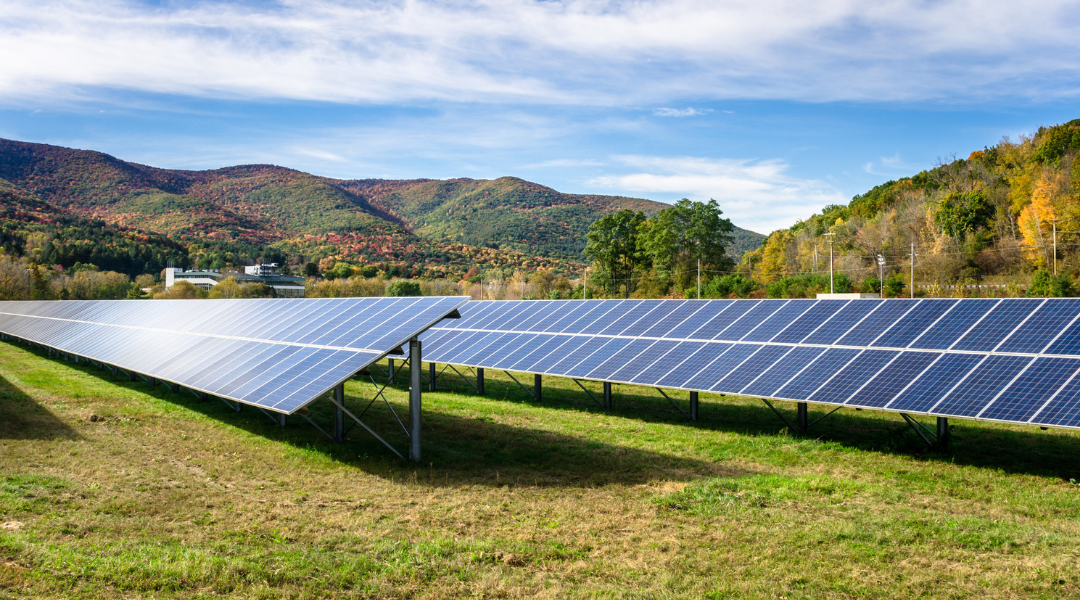Independent insurance agents can expand their renewable energy books by supporting the growing number of contractors who want to use surety bonds instead of cash or letters of credit (LOCs) for their solar, wind, and battery energy storage system (BESS) projects. To facilitate fast approvals, ensure your clients submit complete, well-organized packages and avoid common red flags.
Build Your Renewable Energy Book: An Agent’s Guide to Boosting Surety Bond Submissions
Renewable energy is surging, making up nearly 90% of all new U.S. generation capacity. In 2024 alone, solar capacity rose by 88%, making it the fourth-largest power source in the country. Meanwhile, BESS capacity climbed nearly 70%, marking its fastest expansion on record.
Amid these shifts, P&C agents have a powerful opportunity to grow their books. More solar, wind, and BESS contractors are using surety bonds in place of cash or LOCs, increasing the demand for knowledgeable bond partners.

By helping your clients construct strong renewable bond submissions, you can speed up their approvals and ensure their satisfaction. So, how can you optimize your contractor clients’ bond applications?
Below, we’ll explain how to package renewable energy bond submissions, key details to include, and common pitfalls that can derail approvals.
Renewable Energy Surety Bonds: Frequently Asked Questions (FAQs)
Q: Do utilities accept bonds for interconnection?
A: It depends. Many utilities have started accepting surety bonds in place of cash or LOCs to cover interconnection or grid-upgrade obligations. However, acceptance policies vary by region, program, and project size, so make sure to confirm with your utility.
Q: Bond vs. LOC—which is cheaper and faster?
A: Surety bonds usually cost around 1% to 3% of the total bond amount, whereas LOCs typically require 100% collateral or a lien on assets. Thus, LOCs can limit contractors’ liquidity and borrowing power more significantly than surety bonds and introduce complex bank covenants.
Q: How are decommissioning amounts determined?
A: Local jurisdictions base their decommissioning bond amounts on third-party estimates. These estimates are reviewed and updated every three to five years. Some jurisdictions allow salvage value to offset total costs, while others require gross-cost bonding.
Q: When are O&M or warranty bonds used?
A: Once a project is operational, owners and lenders may require Operations & Maintenance (O&M) or warranty bonds to safeguard its long-term performance. These bonds protect investors and subscribers from costly disruptions related to the Engineering, Procurement, and Construction (EPC) contractor or operator’s failure to meet their maintenance or performance obligations.
Which Bonds Are Required for Renewable Energy Projects?
From community solar farms to wind turbine installations, renewable energy projects move through multiple stages. Each stage involves distinct risks, necessitating different types of surety bonds.
Here are the most common types of surety bonds your contractor clients will encounter:
- Interconnection Financial Security bonds – These bonds come into play during the development stage. They guarantee that the developer will cover all grid upgrade costs and satisfy the interconnection commitments established by the utility.
- EPC Performance & Payment (P&P) bonds – During the construction stage, P&P bonds protect project owners and lenders by guaranteeing that the contractor will complete the project according to its contract terms and pay all subcontractors and suppliers on time.
- O&M/Warranty bonds – O&M and warranty bonds become relevant after a project’s completion. They provide project owners and lenders with financial assurance for ongoing maintenance and equipment performance issues.
- Decommissioning bonds – Once a renewable energy project has reached the end of its life, decommissioning bonds ensure the safe removal of all of its equipment and proper restoration of the land.
- Permit / Site-Lease / Right-of-Way bonds – These bonds ensure compliance with local permit regulations, lease terms, and land-use conditions. Specific requirements vary by jurisdiction and land authority.
Learn More: The Bonds Behind Community Solar: What’s Required at Each Stage
What Underwriters Look for in Renewable Energy Bond Applications
Bond underwriters carefully assess clients’ bond submissions before approving their applications. They often have strict underwriting standards for renewable energy bonds, due to the complex, capital-intensive nature of these projects.

By understanding what underwriters look for, you can vet and optimize your clients’ submissions before they hit their underwriter’s desk. Just pay close attention to these five factors:
- Track record – Underwriters want to see proof that your client has experience working on projects of similar size and complexity. A proven track record assures underwriters that your client can manage their next renewable energy project with confidence.
- Financials – Next, underwriters closely evaluate your client’s financial documents. They want to see three years of financial statements; interim reports; sufficient working capital, liquidity, and leverage ratios; and open bank lines. If your client’s cash is tight, encourage them to include a short memo explaining any mitigating factors, such as partner guarantees or new funding commitments.
- Contracts – Underwriters will scrutinize your clients’ EPC contracts, paying close attention to their project’s scope, liquidated damages (LDs), and right to cure, as well as any offtake agreements, such as power purchase agreements (PPAs), virtual PPAs (VPPAs), or subscription models. In addition, they’ll assess the quality of the project’s equipment and the strength of its warranty coverage.
- Interconnection – Underwriters want to review your clients’ utility correspondence, study results, identified upgrades, and key project dates. If their submission contains any unrealistic or incomplete information, underwriters may be more reluctant to approve their bond application.
- Decommissioning – Lastly, your client’s bond submission should clearly outline the project’s decommissioning cost estimate methodology, review cadence, and salvage assumptions. These details help underwriters assess the project’s long-term liability and ensure your client has adequate funds to restore the site when the project ends.
Learn More: A Growth Opportunity for Agents: Meeting the Bonding Needs of Today’s Small Businesses
Renewable Energy Bond Submissions: A Checklist for Agents
As an insurance agent, you can enhance your clients’ satisfaction by helping them compile complete, well-organized bond submissions. Start by ensuring they include the following details:
Project Snapshot
- Capacity (megawatts, MW AC/DC)
- Technology type (solar photovoltaic [PV], wind, or BESS)
- Location
- Participating utility or program
- COD target
- Special-purpose vehicle (SPV) or legal names exactly as they appear on contracts and financials
Team & Structure
- Organizational chart that outlines the developer, EPC, key subcontractors, and SVP ownership
- Resumes for key principals
Interconnection
- Interconnection screens and studies
- Estimated grid-upgrade costs
- Key interconnection milestones
- Accepted forms of financial security (bond, LOC, or cash)
Contracts & Commercials
- Executed or near-final EPC contract
- Offtake agreements (PPA/VPPA/subscription)
- O&M scope
- Major equipment specifications
- Equipment warranty certificates
- Any prescribed bond forms required by the obligee
Financial Package
- Developer and EPC financial statements (three years plus interim)
- Work-in-progress (WIP) and work-on-hand (WOH) reports
- Bank reference letter and LOC terms, if applicable
- Liquidity summary
- Covenant details
Site & Permits
- Site-control documents or lease terms
- Complete permit list with current statuses
- Decommissioning plan
- Third-party decommissioning cost estimate
Insurance
- Certificates of insurance (COIs) or an insurance schedule showing builder’s risk
- Proof of general liability, auto, excess, and professional insurance coverage, where applicable
While this checklist is extensive, following it can facilitate faster approvals by giving underwriters everything they need to evaluate your clients’ risk sufficiently the first time around.
6 Bond Submission Packaging Tips To Speed Up Approvals
When it comes to renewable energy bond submissions, presentation matters just as much as completeness. You can expedite your clients’ bond approval times by following these simple tips:
- Combine all materials into one bookmarked PDF or a clearly organized folder.
- Use consistent legal names across every document.
- Reconcile contract values and bond amounts to ensure they align.
- Match AC/DC ratings across all documents.
- Include a one-page cover memo that summarizes the project, requested bonds, major risks, and mitigation strategies.
- Add a brief cost-of-capital comparison showing the financial advantages of using surety bonds instead of LOCs, if applicable.
These best practices can help underwriters review your clients’ submissions more efficiently, potentially shaving days off their approval timeline.
Bond Submission Red Flags to Fix Before You Submit
After packaging the bond submission, conduct one last quality check for any lingering red flags. This way, you can identify potential issues before involving the underwriter.
Some common red flags to watch out for include:
- Thin working capital, an overloaded backlog, or a high burn rate
- An EPC scope that doesn’t align with offtake obligations
- Unrealistic interconnection schedules or uncosted grid upgrades
- Weak O&M plan or poor equipment warranties
- Decommissioning estimates that ignore disposal costs or overstate salvage value
Addressing these issues in advance can protect your clients’ credibility with sureties and prevent delays.
Bolster Your Renewable Energy Book With Strong Bond Submissions
In summary, strong bond packages can inspire greater confidence among underwriters, accelerate your clients’ approvals, and secure their long-term satisfaction. All you need to do is follow the best practices outlined above.
Ready to support your renewable energy contractor clients? Send their next bond submission to United Casualty and Surety Insurance Company (UCS)! We offer contract and commercial bonds in the renewable energy space and stand out for our swift response times, convenient submission platform, and flexible solutions.
Key Takeaways:
- Renewable energy projects are rising, creating fresh bonding opportunities for P&C agents with contractor clients.
- Complete, well-organized submissions help underwriters assess contractors’ risk quickly, leading to faster approvals and stronger client relationships.
- Partnering with UCS can give agents access to specialized renewable energy surety solutions for interconnection, construction, O&M, and decommissioning projects.
Sources:
Deloitte. 2025 Renewable Energy Industry Outlook.

UCS Team
Stay up to date
Browse Posts
Browse by topics
UCS is committed to a solutions-driven approach, partnering with agents to deliver the bonds contractors and commercial clients need — backed by determination, speed, and expertise.










Post a comment